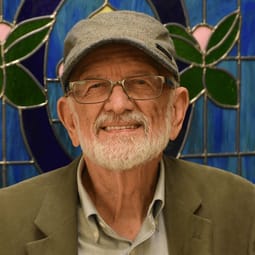
R. Graham Cooks
Henry B. Hass Distinguished Professor of Chemistry, Purdue University, USA
False

Henry B. Hass Distinguished Professor of Chemistry, Purdue University, USA
The decade’s most important development? I believe that in the long run, the most important development in analytical science over the past decade will be seen as the development of a preparative/synthetic capability in mass spectrometry. This began decades ago (1977 to be precise) with the invention of ion soft landing and proceeded via the creation of simple devices (e.g. capacitors) with the soft landing, layer-by-layer, of polyatomic ions. The methodology has been used to prepare microarrays and to deposit pure proteins for cryoEM measurements.
Biggest challenge facing the field? A lack of appreciation of the intricacies of analytical science by other disciplines (especially chemists) who see it as little more than an exercise in measurement using commercial instrumentation. Like modern day pharaohs, the organic synthetic chemist commands – “measure it!” – without pausing to recognize the ingenuity that went into the slaves’ work of conceiving the method, building the instrumentation and achieving useful performance criteria. The “measure it” request at the end of that multi-year process is often a simple application, but the process that allows it is a unique combination of new scientific insights and skillful technology. I see tandem mass spectrometry as representative of this situation rather exactly; and if that example is too dated, then consider 2D MS/MS which provides within 1 second, a single scan covering all product ions of all precursor ions and serves as a means of complex mixture analysis and as a method of oligomer structure determination.
Most exciting development or trend? There are two interlocking developments. First, the decade-old discovery of organic reaction acceleration in microdroplets, an interfacial process with an acceleration factor of 100 to ten million. This phenomenon raises numerous fundamental questions involving highly reactive species like the water radical cation, the effects of strong interfacial electric fields in producing such species and so driving reactions and the characterization of interfacial reaction mechanism (and no, short-lived species in a region some monolayers thick and characterized by strong fields cannot be isolated in order to solve the structural problem by NMR!).
Reaction acceleration in microdroplets permits a high throughput technology based on desorption electrospray ionization (DESI) that allows identification of reaction conditions that maximize product formation. The experiment operates on the sub-second time scale, near ng quantity scale and 6,144 array size. The extension of this approach allows collection of the synthesized material. Then a further extension – still using DESI-MS – performs high throughput enzymatic or other bioassays. DESI-MS allows all three of these key steps in drug discovery to be performed in an automated system. The key to achieving these capabilities is the accelerated reactions in microdroplets mentioned in the preceding paragraph.
Book for scientists? “Thing Knowledge: A Philosophy of Scientific Instruments” by Davis Baird. Gary Hieftje introduced this book to Fred Lytle and Fred passed on the recommendation. The book presents a formal epistemology of instrumentation, arguing that the conception of a new instrument is an act of fundamental science as the resulting device embodies all later applications, which merely represent applied science. This view is a corrective to the increasingly dogmatic opinion that only hypothesis driven research has intrinsic scientific value.
Receive the latest pathologist news, personalities, education, and career development – weekly to your inbox.

False
False
False